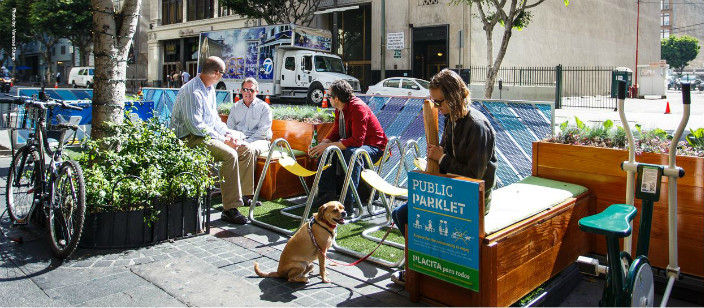In a continued effort to increase safety and accessibility on LA’s streets, Mayor Garcetti and the Los Angeles Department of Transportation have released a strategic plan aimed at reducing pedestrian deaths and improving efficiency, bikeability, and walkability on the city’s streets and sidewalks. The plan builds on the Mayor’s Great Streets initiative, which treats LA’s streets as assets that can revitalize neighborhoods and make transportation easier and more efficient.
“This strategic plan is an urban constitution for what L.A.’s streets can be and how to make them safer and better for the economy and for all Angelenos, no matter how they get around,” said LADOT General Manager Seleta Reynolds, “We look forward to partnering with stakeholders and city leaders to bring it to life.”
Proposals include increased use of technology to help motorists find parking spaces, a major investment in the Automatic Traffic and Surveillance Control street signal program, promoting the use of bicycles around the city and expanded DASH bus services to encourage people to get out of their cars.
“Having a forward-looking strategic transportation plan is essential for neighborhoods in L.A.,” said Councilmember Mike Bonin, chair of the City Council’s Transportation Committee. “I’m excited to work with the Mayor and Seleta in putting this plan into action so we can put neighborhoods first.”
Janette Sadik-Khan of Bloomberg Associates helped direct the strategic planning process.
“A city’s health, safety, and economy starts with its streets, and identifying the strategies and benchmarks to mark progress toward its goals is an essential part of the work LADOT does every day,” said Sadik-Khan. “Safe streets that provide more and better choices for Angelenos can help unlock L.A.’s economic potential and make its streets into something more than just drive-through corridors.”
One of the keys to the successful implementation of this plan will be TOD’s ability to coordinate with other departments, such as the Bureau of Street Services, which oversees repair and repaving of city streets. “The condition of city streets plays a huge role in what we do,” Reynolds said. “If we can get to the point where we can influence the prioritization of which streets are being resurfaced, we can put them back into service in a more organized and smart way.”
The 62-page plan focuses on Mayor Garcetti’s priorities of making the city safe, prosperous, and livable with a well-run government. It outlines goals and benchmarks to track progress and includes key targets for making LADOT an even more transparent and responsive agency that also attracts and retrains a talented workforce.
Key goals include:
Vision Zero: Eliminate traffic deaths by 2025 and design streets to increase the safety of pedestrians–including adding 100 new high-visibility continental crosswalks
Great Streets: Implement changes to the 15 Great Street corridors and launch programs to reduce dangerous speeding in residential neighborhoods. Increase bike infrastructure and launch a regional bike share program. Expand bus service and improve its quality and connectivity with surrounding neighborhoods.
A 21st Century DOT: Streamline LADOT’s operations to implement needed safety and mobility projects quickly and efficiently. Make the agency a great place to work and work better with other agencies. Enhance technologies to manage traffic, meters, and parking operations.
Customer Service: Make LADOT accessible and responsive to Angelenos, provide more and better information to residents, and improve parking enforcement
World-Class Streets for a World-Class Economy: Real-time traffic information and more efficient allocation of the street to support local foot traffic and better manage freight traffic. Build Great Streets for vibrant and prosperous neighborhood business districts.
The full LADOT Strategic Plan, called Great Streets for Los Angeles, can be found at http://www.ladot.lacity.org/WhatWeDo/AboutUs/AnnualReport/index.htm.
